- Home
- Bernard Cornwell
Waterloo The History of Four Days, Three Armies and Three Battles Page 5
Waterloo The History of Four Days, Three Armies and Three Battles Read online
Page 5
When Wellington took command of his ‘infamous army’ he sent for Picton. He needed every Peninsular veteran he could find, and the Welshman was a man he could trust to lead and inspire troops. Picton was still suffering. Before leaving Britain he lay down in a newly dug grave and remarked morbidly, ‘I think this would do for me.’ Despite that gloomy premonition he had come to Brussels, though somehow he had managed to mislay his luggage with his uniform, so that he went to battle in a shabby greatcoat and a mouldy brown hat. He must have cut a strange figure among the dazzling uniforms at the ball, amidst all the lace and gold thread, epaulettes and aiguillettes, not to mention the low-cut dresses of the ladies, many of them young English women like the 22-year-old Lady Frances Wedderburn-Webster, who, though married and pregnant, had been seen meeting the Duke of Wellington in a Brussels park just a few days before. A British staff officer had seen the Duke strolling alone in the park, then an open carriage had stopped and Lady Frances stepped out and the couple, the officer wrote, ‘descended into a hollow, where the trees completely screened them’. In time a London newspaper, the St James’s Chronicle, would spread rumours of their affair, claiming that Lady Frances’s husband was threatening a divorce, a report that led to a libel case and severe damages against the Chronicle, but it is interesting, if not significant, that the Duke found time both on the eve of Waterloo and on the day immediately following the battle, to write to Lady Frances.
Wellington liked the company of women, except for his wife, whom he detested. In that taste he was quite unlike Napoleon, who once remarked, ‘We have ruined everything by treating women too well, we have committed the great mistake of putting them almost on a level with ourselves. Nature created them to be our slaves.’ Wellington was more at ease with women, especially clever women, than with men, and he liked it even more if the women were young, pretty and aristocratic. There was gossip in Brussels: the Duke ‘makes a point of asking all the Ladies of Loose character’ complained Lady Caroline Capel, sister to Wellington’s second in command, Lord Uxbridge, who had himself run off with Wellington’s sister-in-law. The Duke was pointedly warned against one such ‘loose’ woman, Lady John Campbell; her character, he was told, was ‘more than Suspicious’. ‘Is it, by God!’ he responded. ‘Then I will go and ask her myself!’, whereupon ‘he immediately took his hat and went out for the purpose’. There were no suspicious rumours about the seventeen-year-old Lady Georgiana Lennox, daughter of the Duchess of Richmond, who dined next to Wellington at her mother’s ball. She asked if the rumours were true and that the French were marching and he nodded. ‘Yes,’ he said, ‘they are true, we are off tomorrow.’
It was that imminence of battle which gives the Duchess of Richmond’s ball such piquancy. On the night of 15 June there was a throng of beautifully uniformed officers dancing by candlelight, and within twenty-four hours some would be dead, still wearing their silk stockings and dancing shoes. Wellington’s critics, naturally, carp that he had no business attending a ball when he knew that the French were marching, but the Duke, as ever, had his reasons.
In the first place he did not want to display panic. He had been taken by surprise, and by the time he arrived at the ball, at 10 p.m., he knew he had been wrong-footed by Napoleon, but this was no time to show alarm. He knew he was being observed, so it was necessary to display confidence. The second reason was eminently practical. The Duke needed to issue urgent orders, and virtually every senior officer in his army was at the ball, making it easy for him to find and direct them. The ball, in truth, served as an orders group, and it would have been foolish of the Duke to pass up such an opportunity. Lady Hamilton-Dalrymple, who shared a sofa with him for part of the evening, recollected that ‘frequently in the middle of a sentence he stopped abruptly and called to some officer, giving him instructions’.
So what had happened to invest the ball with such threat?
Hell had broken loose on the road from Charleroi.
* * *
One of Napoleon’s difficulties was self-inflicted. He had ordered the main roads north out of France to be destroyed. The roads were made from a layer of compacted gravel over a bed of larger stones, and for some miles south of the frontier the roads had been hacked and trenched to make it difficult for an enemy army to advance into France. It made it equally difficult for the French to travel the other way. The broken roads were no obstacle for infantry or cavalry, they were used to marching in the fields either side of any road, but it was a nuisance for all the wheeled vehicles: the supply wagons and the guns.
Once Napoleon decided to attack he moved fast, concentrating his army just south of the River Sambre. Crews repaired the roads, letting the guns and wagons travel north, but the infantry and cavalry had to use the fields which, for the most part, were planted with rye. The rye grew taller in the early nineteenth century, so the advancing army was faced with thick, close-set, fibrous stalks as tall as a man. The crop was trampled flat, but one cavalryman recalled how the horses stumbled on the tangled mess underfoot, and that inconvenient rye will play a small part in the unfolding events.
Yet despite the stumbling horses and the road-repairs, Napoleon’s army closed on the frontier, so that, by nightfall on 14 June, the day before the Duchess of Richmond’s ball, l’Armée du Nord was bivouacked a few miles south of Charleroi. The Emperor ordered them to attempt concealment by camping behind hills, yet still their cooking fires lit up the night. That glow in the sky should have been the first signal to the allies that something ominous was brewing south of the frontier, but though it was noticed it did not provoke any particular alarm.
The 15th of June dawned fine, and French soldiers were on the march by daybreak. Their first task was to cross the River Sambre, which lay just to the north of the frontier, and three columns approached the river from the south. The central column marched to Charleroi, where the bridge was barricaded, and there was a delay until sufficient infantry had arrived to storm the barrier. The Prussian defenders were few in number, really nothing more than an advanced picquet, and they withdrew northwards as the French occupied the town. By now it was afternoon and Napoleon’s army was crossing into Belgium, where strong cavalry patrols fanned out to discover where the allied armies lay.
This was not the only French activity. Much further west other cavalry patrols were probing north towards Mons. That morning the 2nd Battalion of the 95th Rifles encountered a patrol of French lancers on the frontier close to Mons. Richard Cocks Eyre, a Second Lieutenant (a rank in the Rifles equivalent to an Ensign in the rest of the army), described the encounter as ‘play’, but for the Duke of Wellington such reports were deadly serious. They could be evidence of an enemy advance that would cut him off from the North Sea ports. He also heard reports of French activity around Charleroi, but his first instinct was to protect his right flank, and so he ordered the army’s reserve, which he commanded himself, to remain in Brussels, and the rest of the army to stay in their cantonments to the west. This could have been disastrous. Napoleon was thrusting men across the river and slowly pushing the Prussians back, but Wellington, instead of sending his men towards the danger point, was watching the roads leading to Ostend where most of his troops, guns and supplies were shipped from Britain. Napoleon could not have wished for anything better.
The story of 15 June, the day of the famous ball, is one of mystery. The fog of war is a cliché, yet it applies to that day. Napoleon commits his army to an attack across the Sambre, beginning at dawn, the Prussians retreat slowly and stubbornly, and Wellington, despite messages from his allies, does nothing decisive; indeed he does something frivolous, he goes to a dance. He has been accused of deliberately ignoring the Prussian messages, though why he should do that is also a mystery. He first hears of the French advance at about 3 p.m. The messages have taken a long time to reach him and the Duke’s critics contend that as soon as he heard he should have issued orders that would have taken his troops east towards the fighting, but instead he waits. Baron von Müffling wa
s his Prussian liaison officer and it was Müffling who brought Wellington the news:
When General von Zieten was attacked before Charleroi on the 15th of June, an event which opened the war, he despatched an officer to me, who arrived at Brussels at three o’clock. The Duke of Wellington, to whom I immediately communicated the news, had received no intelligence from the advanced post at Mons.
Two things are interesting about Müffling’s account. We know that the first clash between Napoleon’s army and the Prussians occurred around 5 a.m., yet Müffling, who has no reason to lie about the matter, is certain that the news does not reach Brussels until 3 p.m., ten hours later. Charleroi lies 32 miles south of Brussels and a despatch rider could easily make the journey in under four hours. Yet it took ten. We do not know why, though Wellington once suggested that ‘the fattest officer in the Prussian army’ was chosen as the courier.
The Prussians insist that General von Zieten, whose troops were being pushed back by the French, sent a message to Wellington early on that morning, but proof that the message was sent is not proof that it was received. A huge amount of ink, temper and recrimination has been spilled over this dispute. Gneisenau later said that the Duke was slow in assembling his army and added snidely, ‘I still do not know why.’ Of course he knew, but his dislike of the Duke would not let him admit that there was a reasonable explanation. The sad thing about this animosity is that Gneisenau and Wellington shared much in common: they were both highly intelligent, hard-working, painstaking, disciplined, intolerant of either foolishness or carelessness, and both were committed to the same goal, the utter destruction of Napoleon’s power, yet Gneisenau insisted Wellington was untrustworthy. And trust is important to the story of Waterloo. The allied campaign was predicated on trust, that Blücher would come to Wellington’s aid and Wellington to Blücher’s, because both commanders knew that their individual armies could not defeat Napoleon’s veterans single-handed. They had to combine their forces to win, and if they could not combine they would not fight.
So why, on that fateful Thursday, did Wellington not concentrate his army? Because he still was not sure where he would have to fight. He received news that French forces were seen close to Thuin, their presence near that town, though close to Charleroi, could have indicated a general advance towards Mons, and there had been that clash between British riflemen and French lancers on the Mons road itself. Wellington’s fear was that Napoleon would attack in the west, and that was why he waited to hear more from his troops at Mons. He is specific about this. When Müffling presses him, urging the Duke to concentrate his forces closer to the Prussians, Wellington explains his reluctance.
If all is as General von Zieten supposes, I will concentrate on my left wing … Should, however, a portion of the enemy’s army come by Mons, I must concentrate more to my centre. For this reason I must positively wait for news from Mons before I fix the rendezvous.
That seems clear enough. Far from betraying his allies or treating their warnings with disdain, the Duke was being cautious because, so far, he had no conclusive evidence that the French attack through Charleroi was the main effort. It could have been a ruse designed to draw his men eastwards while the real attack was launched to his right. So he waited. He had said before the campaign that ‘one false movement’ could open him to a devastating attack from Napoleon, and it seemed preferable to make no movement at all. More messages arrived from Blücher in the early evening, and still the Duke waited because he still feared that attack up the road to Mons. It was not till late at night, while the Duke was in the gaudy ballroom, that he heard from Mons that all was quiet there, and he became convinced that Blücher had been right all along and that the French were making their attack on the Charleroi road. News was arriving thick and fast that evening, and one of the crucial messages came from the Baron Jean-Victor Constant-Rebecque, who was Slender Billy’s Chief of Staff and a good man. He reported that the French had advanced north from Charleroi as far as a crossroads called Quatre-Bras and that he had sent troops to oppose them.
What followed is one of the most famous incidents in the Duke’s life. It was after midnight and the Duke was leaving the ball, and as he was escorted through the hall he turned to the Duke of Richmond and whispered, ‘Have you a good map in the house?’
Richmond took Wellington into his study, where a map was spread on the table. The Duke studied it by candlelight, then exclaimed, ‘Napoleon has humbugged me, by God! He has gained twenty-four hours march on me!’
Napoleon’s troops were poised to separate the allies. The Emperor’s plans were working.
* * *
The wonderfully named Hyacinthe-Hippolyte de Mauduit was a Sergeant in Napoleon’s Imperial Guard. That made him crème de la crème. He was in the Old Guard, part of the second battalion of the first regiment of Grenadiers. The Imperial Guard was Napoleon’s favourite unit, the shock troops of the French empire. Every man was a veteran, they received privileges, wore a distinctive uniform and were fiercely loyal to the Emperor they guarded. Benjamin Haydon, a spendthrift British painter, caught a glimpse of the Guard just after Napoleon’s first abdication and wrote:
More dreadful-looking fellows than Napoleon’s Guard I had never seen. They had the look of thoroughbred, veteran, disciplined banditti. Depravity, indifference and bloodthirstiness were burnt in their faces; black moustachios, gigantic caps, a slouching carriage and a ferocious expression were their characteristics. If such fellows had governed the world, what would have become of it?
Sergeant Hippolyte de Mauduit was one of these banditti and, while the Duke of Wellington was at the ball, the Sergeant was settling into the courtyard of an ironmaster’s house in Charleroi which was Napoleon’s temporary headquarters.
We busied ourselves cooking food for a morning meal as well as for an evening meal because we had been on the march for nearly eighteen hours without being able to even unhook our cooking pots and everything indicated it would be the same next day … Aides-de-camp and staff officers came and went constantly and in the course of rushing around they often knocked over our piles of muskets.
The soldiers of the Guard had no real idea what was happening. They had marched all day, heard the sound of firing, marched again, and now, like the veterans they were, they were making certain they had food in their knapsacks. But one of the guardsmen had an old map of Flanders and Hippolyte recalls how they crowded round and worked out from the map what the Emperor’s plan might be.
Did Napoleon even have a plan? He had said, often enough, that the best plan was to make contact with the enemy and only then make the crucial decisions. That day, 15 June, the French had made contact with the Prussians. The first fighting had been south of Charleroi, but resistance stiffened once the French crossed the Sambre and pushed north, and what Hippolyte de Mauduit and his companions would have seen on their map was the main road to Brussels running north out of Charleroi. Just a couple of miles out of town that main road crossed a second road, an old Roman highway, and the Prussians, it seemed, were using that second road for their fighting retreat. They were going eastwards, towards distant Prussia, and no one, it appeared, was defending the main road north to Brussels.
The Waterloo campaign is all about roads. Roads and crossroads. The armies needed the roads. Cavalry and infantry could advance across country without roads, though their progress would be painfully slow, but guns and supply wagons had to have roads. To understand the road map north of Charleroi is to comprehend the problems that the three commanding generals faced, and on the night of the Duchess of Richmond’s ball the problems were almost all on the allied side. Napoleon had grasped the situation, and his strategy of dividing the allies was working. Indeed, Wellington’s caution was making it even easier for the Emperor.
The Prussians are not retreating far. On the night of 15 to 16 June, while the Emperor is in Charleroi and the Duke of Wellington is dancing, the Prussians halt at a small village called Sombreffe. There they will make a stand. Why Somb
reffe? Because here another road is important, a road which crosses the Roman road and leads westwards, and the British–Dutch army is off to the west. That minor road, usually known as the Nivelles road, crosses the Charleroi-to-Brussels highway at an insignificant hamlet called Quatre-Bras. So if the Prussians retreat any farther east then they risk losing contact with Wellington’s forces. The Nivelles road is the last connecting road which will let the British come to the aid of the Prussians, so Blücher orders a stand there.
There is a problem, though. The Duke of Wellington waited too long and the British–Dutch army is assembling late. The Emperor has stolen a march, and the vital crossroads of Quatre-Bras, the place where the British–Dutch must assemble if they are to help Blücher, is virtually undefended. Seize that crossroads and the Duke of Wellington’s army cannot march to help the Prussians.
And at dawn on 16 June the Emperor sends Marshal Ney to capture Quatre-Bras.
It is a hot day, a sweltering summer’s day in Belgium. The Imperial Guard leave Charleroi late, at around 9 a.m., and follow the Emperor’s main forces towards Sombreffe. The Emperor has found the enemy and he knows exactly what he must do. Marshal Ney will capture the vital crossroads at Quatre-Bras, thus keeping Wellington away from the battle the Emperor will fight at the village of Ligny, which is close to Sombreffe. That battle will be between France and Prussia. If Napoleon wins that battle then the Prussians can be driven away east towards their homeland, and the Emperor can turn on the British.

 Sharpe 3-Book Collection 4: Sharpe's Escape, Sharpe's Fury, Sharpe's Battle
Sharpe 3-Book Collection 4: Sharpe's Escape, Sharpe's Fury, Sharpe's Battle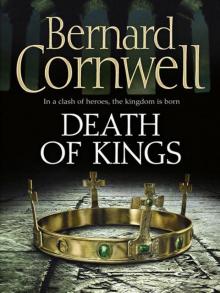 Death of Kings
Death of Kings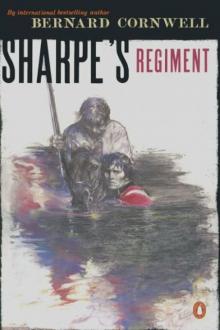 Sharpe’s Regiment
Sharpe’s Regiment 1356
1356 Sword Song: The Battle for London
Sword Song: The Battle for London Wildtrack
Wildtrack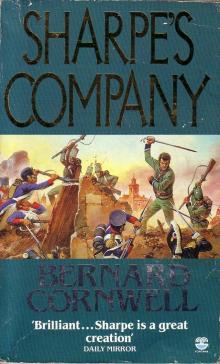 Sharpe's Company
Sharpe's Company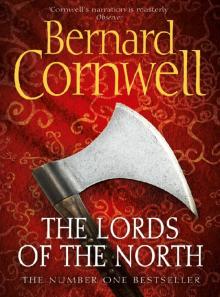 The Lords of the North
The Lords of the North The Last Kingdom
The Last Kingdom The Winter King
The Winter King The Pagan Lord
The Pagan Lord Sharpe's Fury
Sharpe's Fury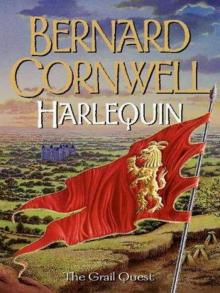 Harlequin
Harlequin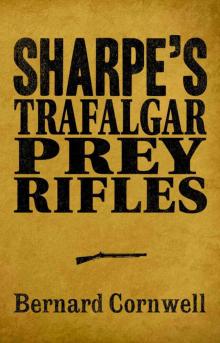 Bernard Cornwell Box Set: Sharpe's Triumph , Sharpe's Tiger , Sharpe's Fortress
Bernard Cornwell Box Set: Sharpe's Triumph , Sharpe's Tiger , Sharpe's Fortress Sharpe's Battle
Sharpe's Battle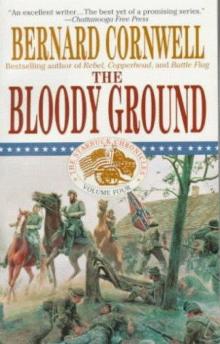 The Bloody Ground
The Bloody Ground The Flame Bearer
The Flame Bearer Stonehenge
Stonehenge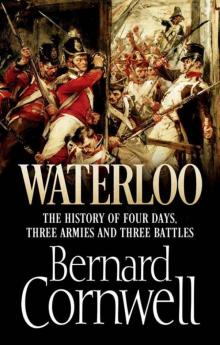 Waterloo: The True Story of Four Days, Three Armies and Three Battles
Waterloo: The True Story of Four Days, Three Armies and Three Battles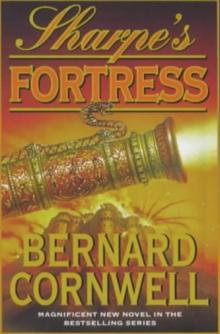 Sharpe's Fortress
Sharpe's Fortress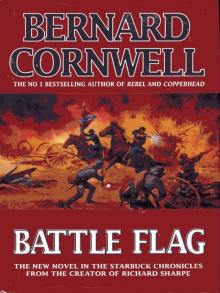 Battle Flag
Battle Flag Sharpe's Siege
Sharpe's Siege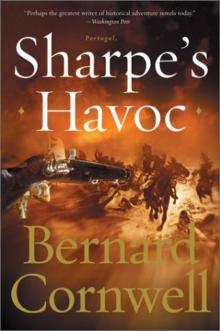 Sharpe's Havoc
Sharpe's Havoc Sharpe 3-Book Collection 6: Sharpe's Honour, Sharpe's Regiment, Sharpe's Siege
Sharpe 3-Book Collection 6: Sharpe's Honour, Sharpe's Regiment, Sharpe's Siege Sharpe's Trafalgar
Sharpe's Trafalgar Sharpe's Revenge
Sharpe's Revenge Excalibur
Excalibur Sharpe’s Honour
Sharpe’s Honour The Pale Horseman
The Pale Horseman Sharpe's Devil
Sharpe's Devil Sea Lord
Sea Lord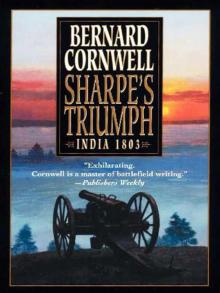 Sharpe's Triumph: Richard Sharpe and the Battle of Assaye, September 1803
Sharpe's Triumph: Richard Sharpe and the Battle of Assaye, September 1803 Sharpe's Honor
Sharpe's Honor Enemy of God
Enemy of God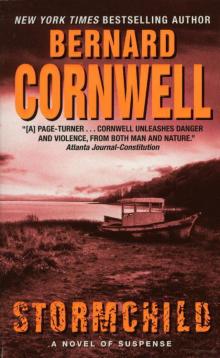 Stormchild
Stormchild Rebel
Rebel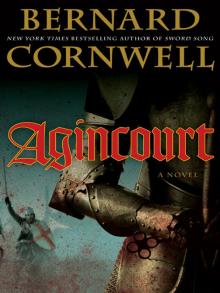 Agincourt
Agincourt Sharpe's Tiger
Sharpe's Tiger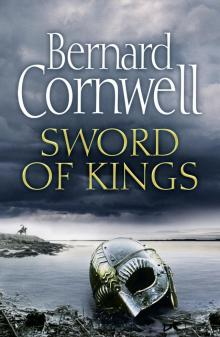 Sword of Kings
Sword of Kings Crackdown
Crackdown The Grail Quest Books 1-3: Harlequin, Vagabond, Heretic
The Grail Quest Books 1-3: Harlequin, Vagabond, Heretic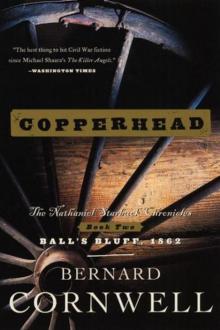 Copperhead
Copperhead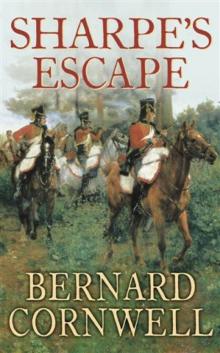 Sharpe's Escape
Sharpe's Escape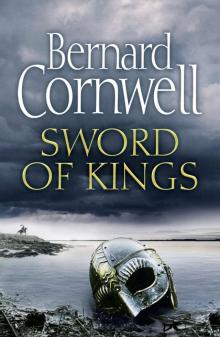 Sword of Kings (The Last Kingdom Series, Book 12)
Sword of Kings (The Last Kingdom Series, Book 12)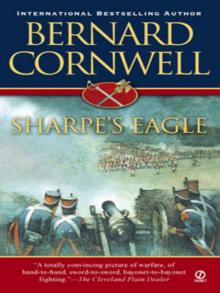 Sharpe's Eagle
Sharpe's Eagle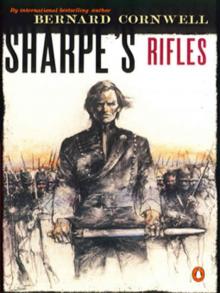 Sharpe’s rifles
Sharpe’s rifles Sharpe's Skirmish
Sharpe's Skirmish Sharpe 3-Book Collection 7: Sharpe’s Revenge, Sharpe’s Waterloo, Sharpe’s Devil
Sharpe 3-Book Collection 7: Sharpe’s Revenge, Sharpe’s Waterloo, Sharpe’s Devil Sharpe's Christmas
Sharpe's Christmas Scoundrel
Scoundrel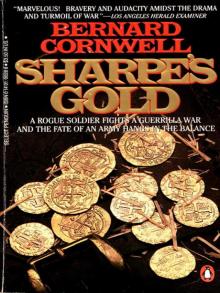 Sharpe’s Gold
Sharpe’s Gold Warriors of the Storm
Warriors of the Storm The Warrior Chronicles
The Warrior Chronicles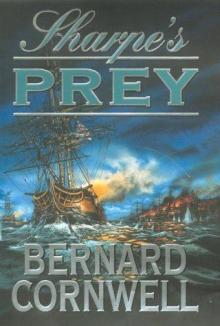 Sharpe's Prey
Sharpe's Prey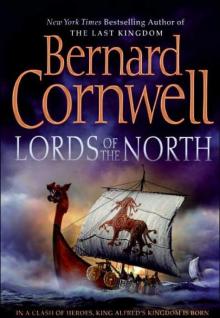 Lords of the North
Lords of the North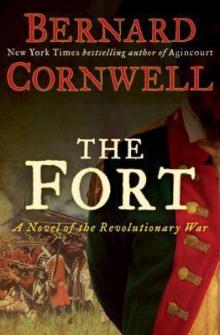 The Fort
The Fort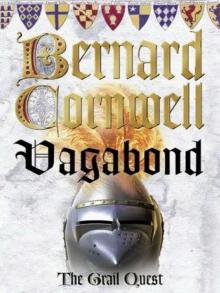 Vagabond
Vagabond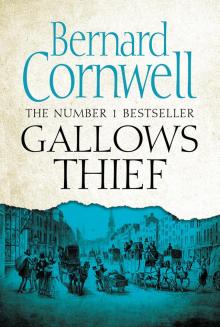 Gallows Thief
Gallows Thief Redcoat
Redcoat Sharpe 3-Book Collection 5: Sharpe's Company, Sharpe's Sword, Sharpe's Enemy
Sharpe 3-Book Collection 5: Sharpe's Company, Sharpe's Sword, Sharpe's Enemy The Winter King: A Novel of Arthur
The Winter King: A Novel of Arthur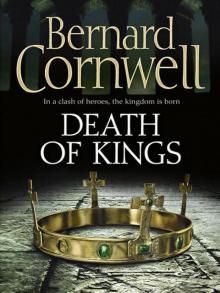 Death of Kings st-6
Death of Kings st-6 Lords of the North s-3
Lords of the North s-3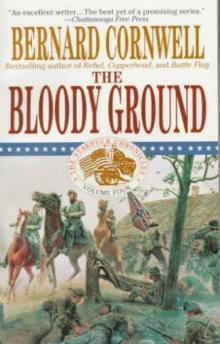 The Bloody Ground - Starbuck 04
The Bloody Ground - Starbuck 04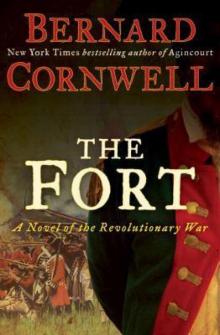 The Fort: A Novel of the Revolutionary War
The Fort: A Novel of the Revolutionary War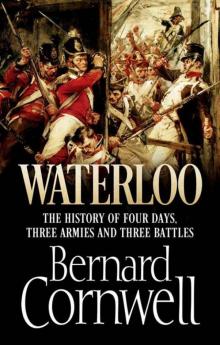 Waterloo The History of Four Days, Three Armies and Three Battles
Waterloo The History of Four Days, Three Armies and Three Battles The Last Kingdom sc-1
The Last Kingdom sc-1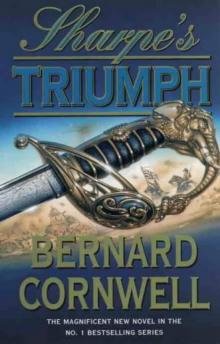 Sharpe's Triumph
Sharpe's Triumph Sword Song s-4
Sword Song s-4 1356 (Kindle Special Edition)
1356 (Kindle Special Edition) The Empty Throne (The Warrior Chronicles, Book 8)
The Empty Throne (The Warrior Chronicles, Book 8)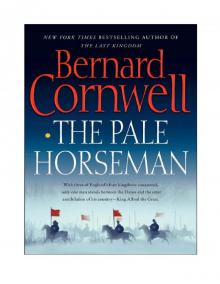 The Pale Horseman s-2
The Pale Horseman s-2 Sword Song
Sword Song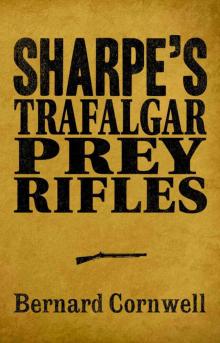 Sharpe 3-Book Collection 3: Sharpe's Trafalgar, Sharpe's Prey, Sharpe's Rifles
Sharpe 3-Book Collection 3: Sharpe's Trafalgar, Sharpe's Prey, Sharpe's Rifles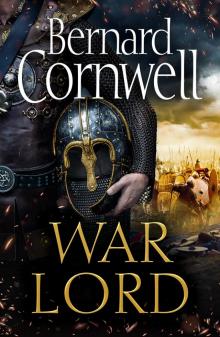 War Lord
War Lord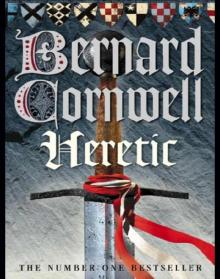 The Grail Quest 3 - Heretic tgq-3
The Grail Quest 3 - Heretic tgq-3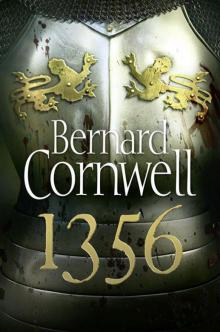 1356 (Special Edition)
1356 (Special Edition) Sharpe's Waterloo
Sharpe's Waterloo A Crowning Mercy
A Crowning Mercy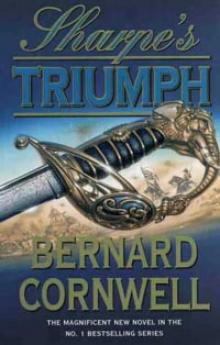 Sharpe's Triumph s-2
Sharpe's Triumph s-2 Sharpe s Fury
Sharpe s Fury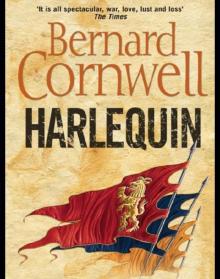 The Grail Quest 1 - Harlequin tgq-1
The Grail Quest 1 - Harlequin tgq-1 Warriors of the Storm (2015)
Warriors of the Storm (2015) War of the Wolf
War of the Wolf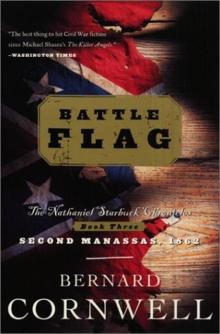 Battle Flag tnsc-3
Battle Flag tnsc-3 The Fallen Angels
The Fallen Angels Enemy of God twc-2
Enemy of God twc-2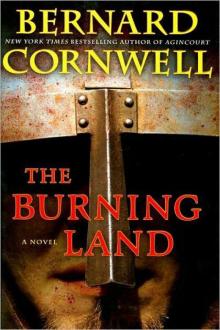 The Burning Land sc-5
The Burning Land sc-5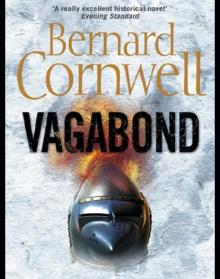 The Grail Quest 2 - Vagabond tgq-2
The Grail Quest 2 - Vagabond tgq-2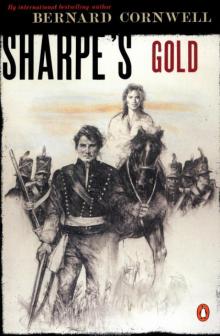 Sharpe's Gold rs-9
Sharpe's Gold rs-9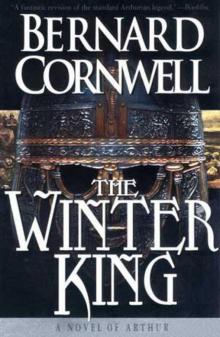 The Winter King twc-1
The Winter King twc-1 Sharpe 3-Book Collection 1: Sharpe's Tiger, Sharpe's Triumph, Sharpe's Fortress
Sharpe 3-Book Collection 1: Sharpe's Tiger, Sharpe's Triumph, Sharpe's Fortress